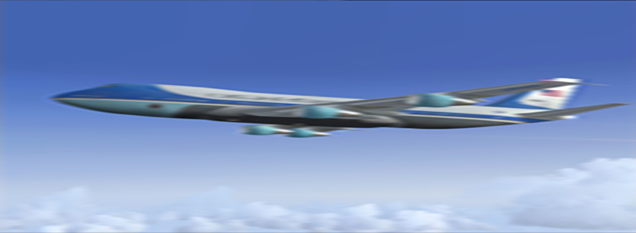In January 1943, Franklin Roosevelt became the first serving US President to fly in an aircraft for official purposes. The destination was Casablanca in Morocco, and the choice of transport was a highly practical one; the threat of German U-Boats made passage by sea too perilous. The plane that made that small bit of history was a civilian one, a Pan-Am craft named Dixie Clipper; no one had as yet considered a permanent, standby aeroplane to transport, at a moment’s notice, the Commander in Chief. However, by the time that Roosevelt’s successor Harry Truman took office, plans were indeed afoot for such an enterprise.
AIR FORCE ONE
In 1947, Truman signed the National Security Act which would create what is perhaps the most famous political mode of transport in existence, Air Force One (oddly, the President signed the legislation while on board his predecessor’s old VC-54C, on which Roosevelt had travelled to Yalta in February 1945).
Air Force One (the call sign was created in 1953 following an air traffic control mix-up with a commercial flight) has become one of the President’s most obvious signs of power and freedom, name-checked and immortalized in many a movie and TV show (it’s positively salivated over in The West Wing, for instance), acquiring over time a kind of personality of its own. It wasn’t long before the rest of the world followed suit, and now the sight of world leaders zipping about the globe in a government Lear Jet is a familiar one.
TAKE THE CAR, HERMAN
Of course, not everyone gets to rise to the very top in politics, but travel perks, whether by air, road, rail or sea, are still a luxury cherished by those in public service, like European Council President Herman Van Rompuy who though it would be a good idea to take his family on a quick jaunt to Charles De Gaulle Airport in his taxpayer-funded car, a vehicle usually reserved for official occasions.
In today’s austerity-hit world, such flagrant disregard for frugal expenditure is frowned upon by voters evermore conscious of the gulf between politician and citizen. If “we are all in it together” as UK Prime Minister David Cameron contends, then more than a little restraint needs to be in evidence from the political class.
The Irish government has been cutting back on travel perks, for example. Following a backlash last year directed at the previous government’s excessive use of ministerial cars, the new government has, as of May 2011, decided to cut back on travel perks for senior, and retired senior politicians, reserving cars for only the highest ranking ministers. Last year, total travel expenditure of this sort amounted to around 7.5€ million, down from over 10€m over 2008-9 (a state car, including police protection and chauffeur, costs around 280,000€ to run per annum), and the government is determined to reduce the bill further by about €4m, according to a recent article in the Irish Examiner. There’s even been talk of car pooling.
HIGH FLYERS
In Europe, travel perks are also a valued commodity; just ask any Eurocrat. Aside from Van Rompuy, MEPs are only too willing to exploit vehicular privilege, as are Parliament employees, as evidenced by the well-catered chartered flight that spirits staff to Strasbourg every month.
In April, the European Parliament’s Budgetary Committee rejected amendments to the annual budget that would have forced MEPs, and other EU staff, to fly economy, rather than business, class on flights of under four hours. MEPs receive an average of 192€ to travel to and from Parliament (in addition to their monthly take home salary of around 6,000€), a situation they have also voted to uphold, rejecting a further amendment that would have abolished the payment.
So, austerity may be the default economic programme for much of the globe these days, but the much touted belt-tightening does not apparently extend to discomfort. Everyone undoubtedly likes to travel in relative ease; but, unlike the majority, those who have it in their power to keep their own standard of living high will continue to do so, it would appear.







